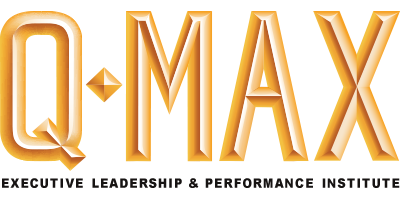 How critical of an issue is it to identify current and future employees equipped to expand with the company, as you can never have all superstars on your roster?
How critical of an issue is it to identify current and future employees equipped to expand with the company, as you can never have all superstars on your roster?
The Situation Revealed behind Failure and Success
Having the “right people” is an essential component to achieving business success. Jim Collins in his book Built to Last, Successful habits of Visionary Companies calls it “having the right people on the bus”. In our consultancy we frequently find a deficiency in the area of talent evaluation when it comes to hiring new employees. We have found that many organizations either have not employed, or are not aware of tools to assist them in finding people who are a cultural match. They operate within the historical context of valuing the “requirements on the page”.
When an executive team makes a commitment to building the organization, to building the cultural component beginning with “the right people” what becomes available in terms of measurable results are nothing short of extraordinary. By aligning the proper talent, with a sufficient vision, we create the foundation for outstanding sustainable results. Collins points to these components in his book, though he speaks of it in different terms. For the executive who wants to build a sustainable rapidly growing business, you need to have players who all align with your game.
RUSS
 Given that such a high percentage of transformational initiatives for companies fail, one has to look for the prevailing issue or common denominator in such phenomenon. Leaders tend to begin with the best of intentions. Unfortunately, that is insufficient to deliver on the promise of transformation. The functional question is: why? What is missing that would have the leadership initiative succeed?
Given that such a high percentage of transformational initiatives for companies fail, one has to look for the prevailing issue or common denominator in such phenomenon. Leaders tend to begin with the best of intentions. Unfortunately, that is insufficient to deliver on the promise of transformation. The functional question is: why? What is missing that would have the leadership initiative succeed?
There is a colloquial phrase that states a fish rots from the head down. If we were to map on that concept over the intended transformational initiative for a business, we have to ask what is the "head" of the failed initiative?
At first sight, where one would look is the organizing principle or concept that the leadership has created for the transformational initiative, the proverbial "head of the fish". This organizing principle is the vision, perceived value or opportunity that the leadership intends to deliver. Usually there is a lot of excitement and hype when a new initiative is rolled out. Organizations tend to promote these new initiatives with some fanfare. After the enthusiasm wanes, why then does the transformational initiative fall short? Typically, we can look to two primary areas that were insufficient in the design of the initiative's success.
First, if the individual employee or team cannot connect this targeted initiative to their own self interest, there is no compelling case for the team or individual to work at an accelerated level. In their experience, the initiative eventually looks like more work to do. When employees come to the to the conclusion that they are simply being driven to work more or work harder, it is unlikely they are performing at an elevated level, not withstanding the notion of being transformed.
Second, employees who cannot connect their own personal self interest to the success of the transformational initiative, do not experience being empowered. People who are not empowered to take action consistent with their self interest will not generate requests for any resources or trainings needed to succeed.
A lack of sufficient resources or training in the face of a transformational initiative leads to a predictable outcome of failure. It is incumbent of any leadership committed to a transformational initiative to connect the employees self interest to the "win" of the transformational game. People who are operating out of their own self interest to win are sufficiently empowered and will request or demand the resources and training needed to succeed in the long run.
BLAKE
 Committing to your own development and the development of your employees is the foundation of organizational transformation. Identifying gaps in organizational leadership and addressing them effectively is a challenge for many executives. One of the first steps if not “the” first step in the process is recognizing that there is a gap in thinking, a gap that exists between the results you have and the results you want. By first recognizing the gap you can start to address what I will call the critical components of success.
Committing to your own development and the development of your employees is the foundation of organizational transformation. Identifying gaps in organizational leadership and addressing them effectively is a challenge for many executives. One of the first steps if not “the” first step in the process is recognizing that there is a gap in thinking, a gap that exists between the results you have and the results you want. By first recognizing the gap you can start to address what I will call the critical components of success.
If you can identify that you have not yet made the commitment to you own development, then one can also prophesize that the reason you’ve noticed the need for a new approach, is that you are either aware of, or becoming aware of, the critical components of success that are missing within your organization / employees. It will take an action on the part of this now “aware” executive to move from simply identifying a need, to making an impact on the organization and employees.
The Key TakeAway QUESTION you should be asking yourself this week is:
How am I preparing my company and employees for succeeding when I have yet to commit to my own “different thinking and approach” to leadership?
Here’s to another QUESTION of Leadership!!



